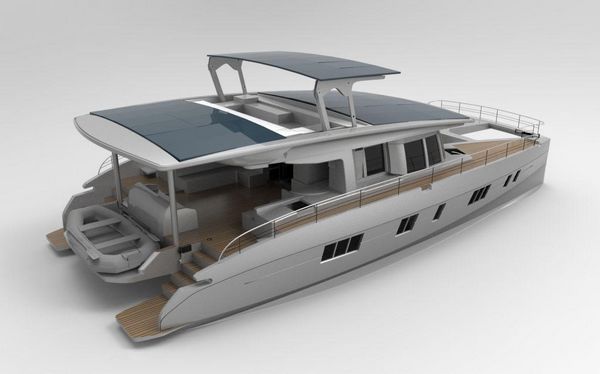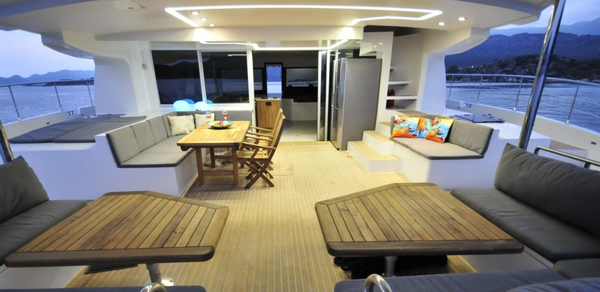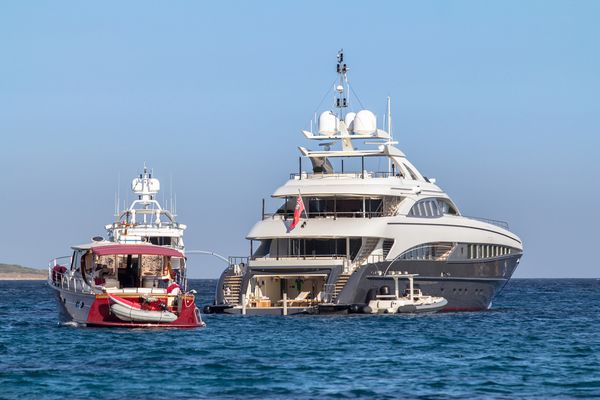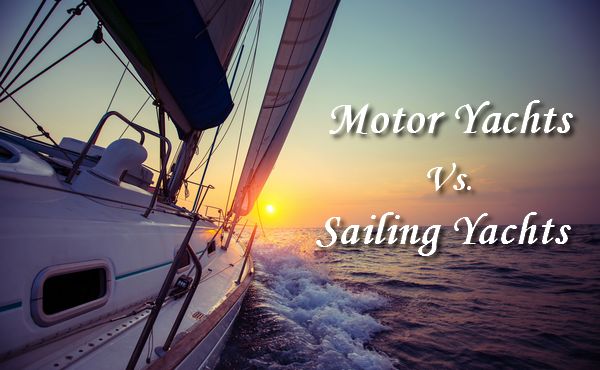In the past, when it came to deciding which type of yacht to buy or charter, the initial decision tended to narrow down to two choices: a motor boat and a sailboat. Today, the distance between the two is getting smaller as sailing yachts become more luxurious.
So how do people who want to invest in a share a boat or charter decides which type of cruise ship is best for them? We’ve put together this guide to help you understand the advantages and disadvantages of motorboats and sailboats, so you can choose which one is best for you.
Motorized Yachts
There is no doubt that motor ships dominate the industry as they make up 90% of the world’s fleet. There are many advantages to chartering or taking a sharing a cruise in motor boats, but most of all is the fact that they can cover longer distances in less time. That makes it an ideal choice for people who want to travel extensively on their luxury vacations.

Motor cruises are also perfect for those who want to completely relax and not get too involved with the crew and running the ship. Relaxation extends to the various facilities that can be accommodated by a motor yacht such as a helipad, swimming pool, hot tub, lift and basketball court.
They have more ‘mod cons’ with an entertainment system and a whole garage full of tenders and water toys. Even the smallest motor yachts have larger satellite dishes than sailing yachts, meaning a stronger signal, which is great if you need to run your business or if your family relies on streaming data. Because they can accommodate more decks, they allow for more living space and are perfect for onboard entertainment.

The power of motor yachts is one of their best features, but they also have some less obvious benefits. They were easier for crews to sail and operate, resulting in greatly reduced expenses and a much easier crew recruitment process. Motor yachts usually have stabilizers to help stabilize the yacht, which makes them better for guests who suffer from seasickness.
They also feature state-of-the-art navigation and communication technology systems. In terms of crew, motor yachts are easier to operate and require less experience. Their shallow draft allows them to access some places that sailing yachts cannot.
Sailing yachts
While motor yachts have a reputation for speed and comfort, sailing yachts have cornered the market in adventurous and romantic journeys. They evoke the past of great voyages and discoveries, conjuring images of taking in the elements and getting closer to nature. Traditionally, sailing yachts are a more relaxed environment with greater interaction between crew and passengers.
On sailing yachts, the owner/passenger is on the shared deck with most of the crew, whereas on a motor yacht most of the crew will be on the other decks so as not to disturb the guests. However, motor boats are increasingly becoming informal depending on guest preferences.

Although sailing yachts tend to be slower than motor yachts, sailing technology has also advanced. Hoisting a sail is a wonderful feeling and means that sailboats are often preferred by those seeking a peaceful experience at sea. On the other hand, sailing yachts are more dependent on weather conditions and cannot guarantee high speeds like motor yachts. They needed a more skilled crew and appealed to those interested in sailing techniques. Some destinations, such as the Eastern Caribbean, which benefit from the trade winds, are more suitable for sailing yachts.
Sailboats are without question more environmentally friendly and fuel efficient. However, the motor yacht industry is working hard to narrow the gap and create more ‘green’ boats. There are now hybrid and solar-powered yachts like that SolarCat 64 built by Nedship. Sailing yachts have a clear advantage when it comes to spending money on fuel.
In general, if you are new to boat sharing or ownership, motor yachts are a safe bet for comfort, space, and power. But those who grew up with a passion for sailing may prefer sailing cruises. No matter which yacht you choose, you are sure to have an unforgettable experience at sea.








